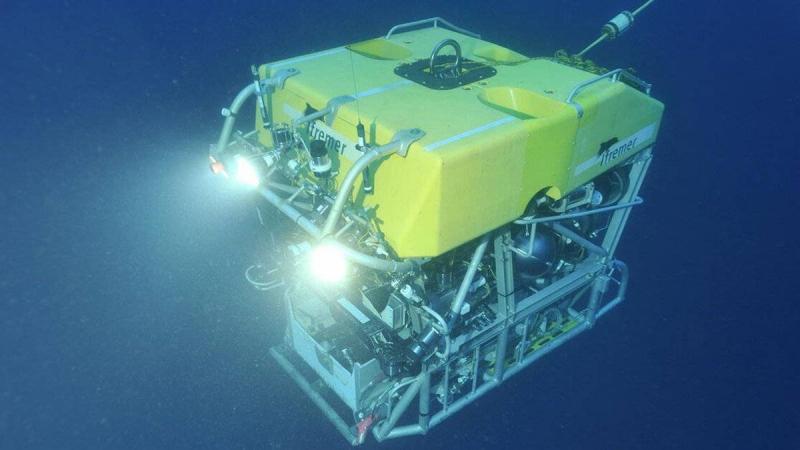The French Research Institute for Exploitation of the Sea stated that a robot capable of diving to depths of up to 6,000 meters underwater is on its way to assist in the search for a submarine that disappeared while descending to the wreck site of the Titanic. It may also help free the submarine if it is stuck. The institute explained that the remotely operated robot named Victor 6000 can dive deeper than any other equipment currently at the site located in the North Atlantic. It was added that the robot has arms that can be controlled remotely to cut cables or perform other maneuvers that could assist in freeing a snagged submarine.
The robot, which is on board a French research vessel, is expected to arrive late on Wednesday, giving it limited time to provide help before the deadline on Thursday morning, when the air supply in the missing submarine is expected to run out. Oliver LeFour, head of marine operations at the French Institute for Exploitation of the Sea, which operates the robot, stated, "Victor cannot lift the submarine by itself." However, he told Reuters that the robot could assist in attaching the submarine, named "Titan" and weighing ten tons, to a ship capable of bringing it to the surface.
LeFour said, "Victor is capable of performing visual exploration using all the video imaging equipment it is equipped with. It also has manipulative arms that can be used to free the submarine, such as cutting cables or other things that may impede it on the seabed." Titan disappeared with five people on board shortly after starting its descent on Sunday to the wreckage of the British Titanic, which sank in 1912 after hitting an iceberg. The wreck is located at a depth of about 3,810 meters.
The French Research Institute for Exploitation of the Sea was part of the team that located the Titanic wreck in 1985 with American underwater archaeology expert Robert Ballard. The robot is operated by a crew of 25 individuals. It can operate nonstop for up to 72 hours and can also work at night.
The U.S. Coast Guard reported that Canadian aircraft equipped to locate submarines detected noises in the area. American media outlets noted that the sounds included intermittent banging noises lasting 30 minutes. LeFour stated, "We do not know what happened. The sounds that were heard give us hope that the submarine is on the seabed and that people are still alive, but there are other possible outcomes… even if the hope is slim, we will go all the way."




